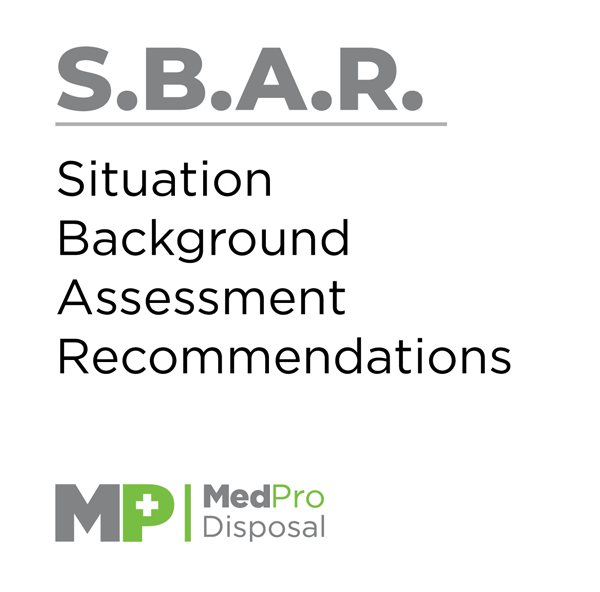SBAR is a common acronym in the medical field to communicate medical info. It improves accuracy and cuts down on dangerous errors. What does SBAR stand for? SBAR’s definition is: Situation, background, assessment, and recommendations.
For more info on SBAR and why it’s important please click here. Below are practical SBAR examples in action:
Scenario 1: Chest Pain
Situation: Mr. Jones is having increased dyspnea and complaining of chest pain on the left of chest.
Background: He had her left hip replaced yesterday. He started complaining of chest pain about three hours ago. His pulse is 155, blood pressure 134 over 57, is restless and short of breath.
Assessment: He may be having a pulmonary embolism, coronary artery disease, precordial chest pain, or a cardiac event.
Recommendation: I recommend you see him immediately and start him on O2.
Scenario 2: Transfusion Reaction
Situation: Mrs. Smith is a day case patient in hematology who is breathless and heart rate is at 130. She may be having a transfusion reaction.
Background: Mrs. Smith came in at 6 AM this morning for a transfusion of 2 units of red blood cells. The first unit was given over 90 minutes and the second one started half an hour ago and is over halfway through. She developed dyspnea within the last 20 minutes, has an increased heart rate and elevated blood pressure.
Assessment: Temperature is 37.1 degrees Celsius. Pulse is 130. Blood Pressure is 150/96. She’s showing signs of circulatory overload. I have stopped the transfusion and started administering oxygen.
Recommendation: I recommend you come see the patient immediately.
Scenario 3: Collecting Urine Specimens for Bacterial Culture
Situation: Mr. Williams’s nurse is calling about the urine culture order.
Background: Mr. Williams came in for an ordered urine culture for volvulus.
Assessment: The patient is hypotensive and complaining of abdominal pain. He denies symptoms of a UTI, is afebrile and on heparin for his PICC-related DVT.
Recommendation: I recommend there’s no need to collect urine for culture at this time or in the near future.
Scenario 4: Elevated Creatinine
Situation: Mrs. Johnson has an order form her doctor for a PE study.
Background: Mrs. Johnson came in with difficulty breathing and right-side chest pain.
Assessment: Mrs. Johnson’s creatinine level is 3.1, which is far above the cutoff level for a PE study.
Recommendation: I recommend we change the PE study order to a VQ scan order.
SBAR can be applied to any medical situation. The goal of this practice is to inform and guide someone to take action. There will likely be stressful situations in which you will have to use SBAR, but remember that communicating clearly will be best for everyone involved, especially the patient.
If you have questions about you or your patients health — such as if vaping, drinking alcohol, or coffee is causing chest pains. Remember to utilize the SBAR method to help inform your healthcare.
For a full SBAR how to with examples and pdf report for more examples, please click here.
Read our heart health related article on Lisinopril, a popular generic ACE inhibitor, used for high blood pressure management, and the treatment of other cardiac problems please click here to read more.




